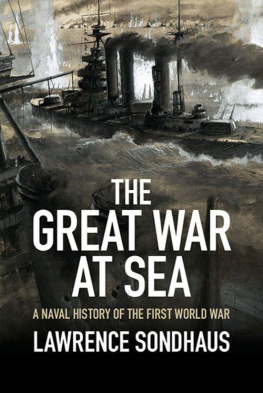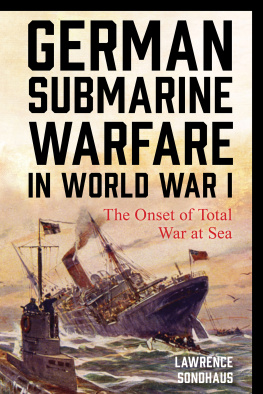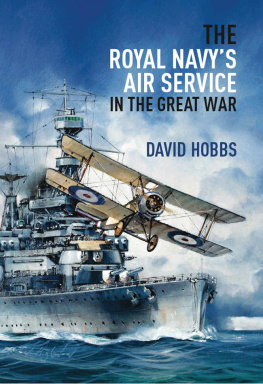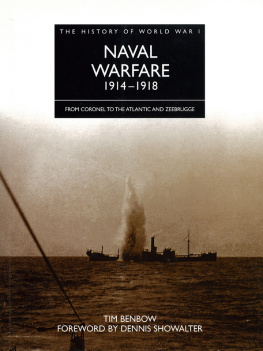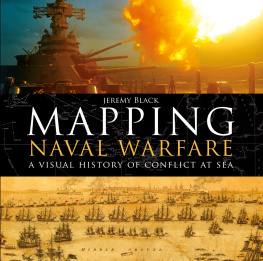Naval Warfare, 18151914
From the era of Napoleon and Lord Nelson to the Anglo-German naval race before the First World War, naval warfare underwent a slow transition from the age of the wooden sailing fleet to the modern steel navy. Naval Warfare, 18151914 covers major clashes such as the Crimean War and American Civil War, as well as lesser-known regional conflicts, colonial empire-building and exercises in gunboat diplomacy.
The greatest coverage is given to the leading naval powers, including the rise of the German, Japanese and American navies towards the end of the era. In addition, Naval Warfare, 18151914 also includes accounts of lesser-known conflicts, such as those during the Latin American wars for independence, for which there are no readily available English-language accounts.
The technological breakthroughs of steam power, armor, artillery and torpedoes that brought changes not only to warship design, but also to naval strategy and tactics are fully surveyed, and the rivalries of the naval powers, their wars and expeditions are considered with special attention to the evolving state of naval technology. It is this relationship between the industrialization of a country and the advancement of its naval strength which is a key to understanding this important period of world history.
Naval Warfare, 18151914 is a concise overview of global naval developments between the Napoleonic era and the First World War and will be invaluable to students and enthusiasts alike.
Lawrence Sondhaus is Associate Professor of History at the University of Indianapolis. He is author of five books including Preparing for Weltpolitik: German Sea Power before the Tirpitz Era (Naval Institute Press, 1997) and two volumes on the Austrian navy.
Warfare and History
General Editor
Jeremy Black
Professor of History, University of Exeter
Air Power in the Age of Total War
John Buckley
The Balkan Wars, 19121913: Prelude to the First World War
Richard C. Hall
European and Native American Warfare, 16751815
Armstrong Starkey
European Warfare, 16601815
Jeremy Black
Frontiersmen: Warfare in Africa Since 1950
Anthony Clayton
German Armies: War and German Politics, 16481806
Peter H. Wilson
The Great War 191418
Spencer C. Tucker
Israels Wars, 19471993
Ahron Bregman
The Korean War: No Victors, no Vanquished
Stanley Sandler
Ottoman Warfare, 15001700
Rhoads Murphey
Seapower and Naval Warfare, 16501830
Richard Harding
The Soviet Military Experience
Roger R. Reese
Vietnam
Spencer C. Tucker
The War for Independence and the Transformation of American Society
Harry M. Ward
Warfare and Society in Europe, 17921914
Geoffrey Wawro
Warfare at Sea, 15001650
Jan Glete
Warfare in Atlantic Africa, 15001800: Maritime Conflicts and the Transformation of Europe
John K. Thornton
Warfare, State and Society in the Byzantine World, 5651204
John Haldon
Wars of Imperial Conquest in Africa, 18301914
Bruce Vandervort
Western Warfare in the Age of the Crusades, 10001300
John France
Naval Warfare 18151914
Lawrence Sondhaus
Naval Warfare, 18151914
Lawrence Sondhaus

London and New York
First published 2001
by Routledge
11 New Fetter Lane, London EC4P 4EE
Simultaneously published in the USA and Canada
by Routledge
29 West 35th Street, New York, NY 10001
Routledge is an imprint of the Taylor & Francis Group
This edition published in the Taylor & Francis e-Library, 2001.
2001 Lawrence Sondhaus
All rights reserved. No part of this book may be reprinted or reproduced or utilised in any form or by
any electronic, mechanical, or other means, now known or hereafter invented, including photocopying
and recording, or in any information storage or retrieval system, without permission in writing from
the publishers.
British Library Cataloguing in Publication Data
A catalogue record for this book is available from the British Library
Library of Congress Cataloguing in Publication Data
Sondhaus, Lawrence, 1958
Naval warfare, 18151914 / Lawrence Sondhaus.
p. cm. (Warfare and history)
Includes bibliographical references and index.
1. Naval art and scienceHistory19th century. 2. Naval art and scienceHistory20th century.
3. Naval history, Modern19th century. 4. Naval history, Modern20th century. I.
Title. II. Series.
V51 .S66 2000
359009034dc21 00034464
ISBN 0-415-21477-7 (hbk)
ISBN 0-415-21478-5 (pbk)
ISBN 0-203-13223-8 Master e-book ISBN
ISBN 0-203-17979-X (Glassbook Format)
Contents
List of plates
HMS Thunderer (left) and Austrian frigate Guerriera (center)
in allied attack on Sidon (26 September 1840) |
HMS Agamemnon in the bombardment of Sevastopol
(17 October 1854) |
CSS Virginia and USS Monitor, Battle of Hampton Roads
(9 March 1862) |
Austrian screw ship of the line Kaiser, the day after engaging
Italian ironclads at the Battle of Lissa (20 July 1866) |
HMS Amethyst (left background) and HMS Shah engage the
Huscar in the Bay of Pacocha (29 May 1877) |
French composite corvette claireur (laid down 1874,
completed 1879) |
Protected cruiser HMS Blake (laid down July 1888,
completed February 1892) |
HMS Dreadnought (laid down October 1905, completed
December 1906) |
Preface
From the era of Napoleon and Lord Nelson to the naval arms races before the First World War, naval warfare underwent a slow transition from the era of the wooden sailing fleet to that of the modern steel navy. Certain developments during the century of change are fairly well known to scholars and students of history, such as the emergence of the monitor design in the American Civil War and the dreadnought battleship during the eight years before the First World War. Yet, for most, the evolution of warships and naval warfare from 1815 to 1914 (or at least to 1906) remains shrouded in mystery, along with most of the naval engagements of the period.
This study will attempt to leave the reader with a better appreciation of the technological breakthroughs in steam propulsion, armor plate, artillery, and torpedoes that brought changes not only to warship design, but also to naval strategy and tactics. The rivalries of the naval powers, their wars and expeditions, will be investigated with special attention to the evolving state of naval technology. The three leading naval powers of the century Britain, France, and Russia naturally will receive the greatest coverage, but the study will also address the decline after 1815 of the Spanish and Dutch navies, as well as the rise before 1914 of German, Japanese, and American sea power. Smaller navies such as the Italian and Austrian, which in 1866 fought the only fleet-scale action of the century between 1805 and 1905, will receive attention where appropriate, along with the navies of the Ottoman empire, China, and the leading South American countries.


